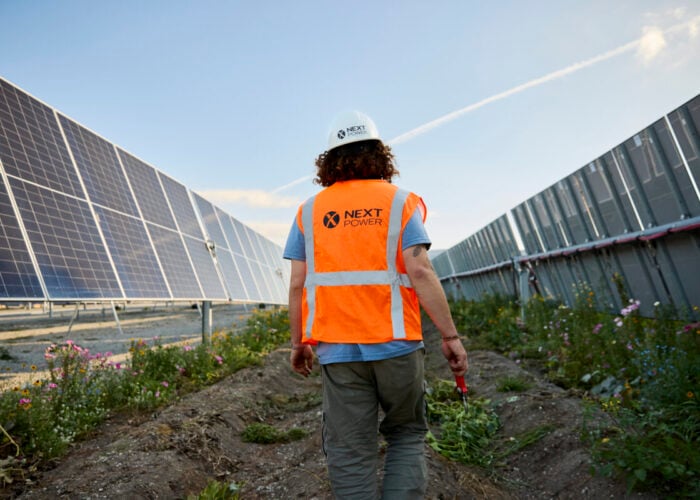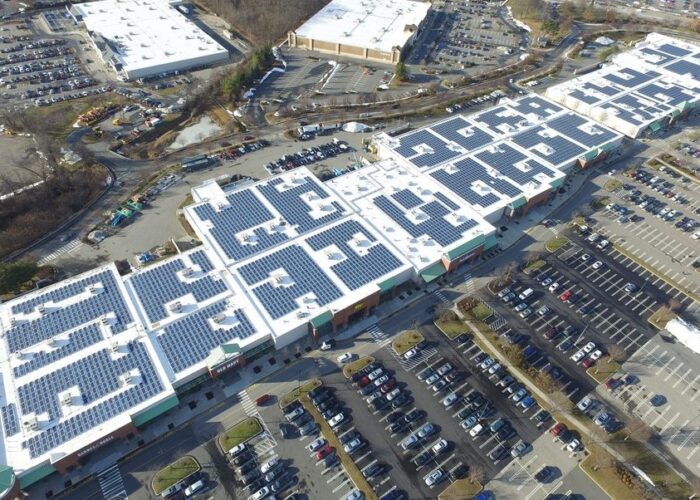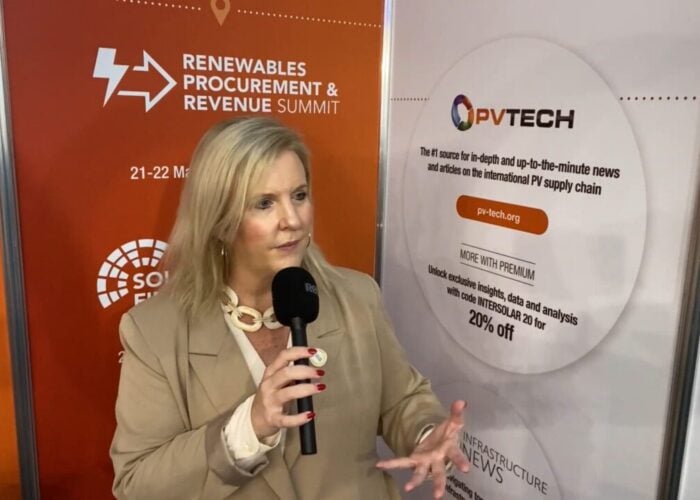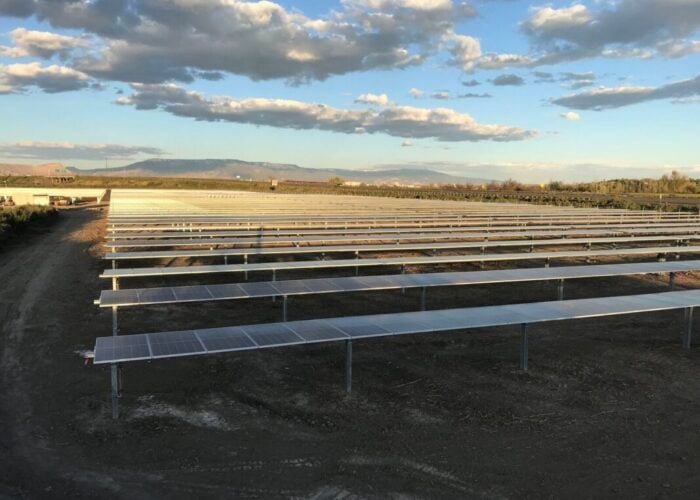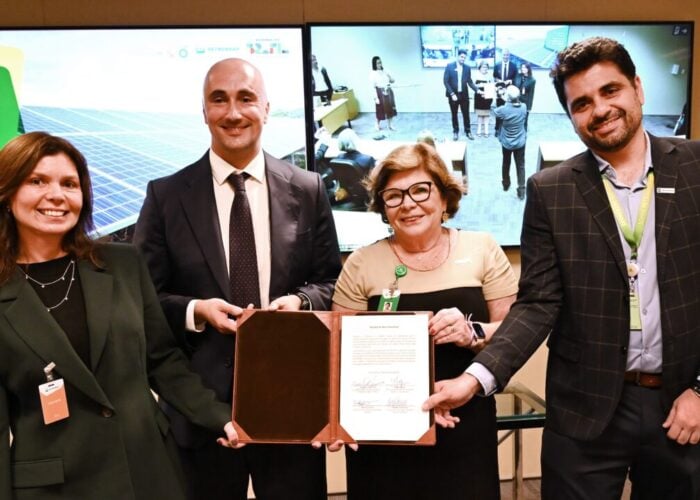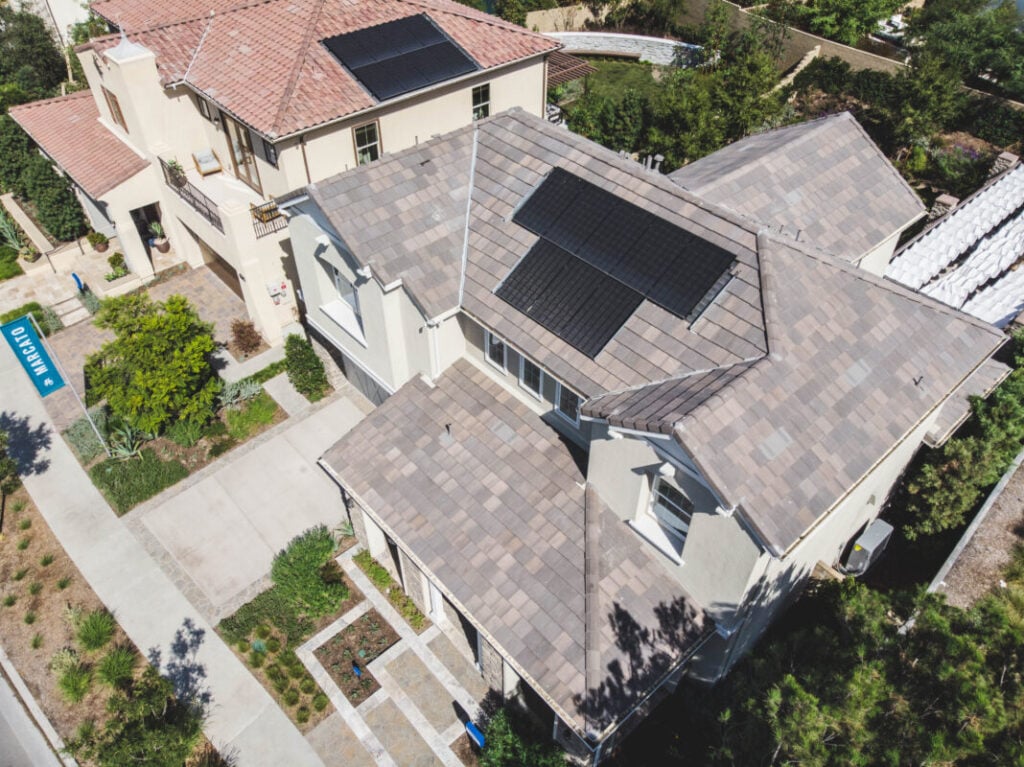
The traditional process of designing rooftop solar installations can be cumbersome. Since around 2012, salespeople have tended to either manually outline rooftops using basic AutoCAD tools or send designs to centralised teams, resulting in significant delays.
In February, US-based residential PV company Sunnova integrated AI-powered design tools into its sales practice through a partnership with PV software company OpenSolar. This has led to what Sunnova tells PV Tech Premium is a faster, more efficient and highly accurate solar design process.
Try Premium for just $1
- Full premium access for the first month at only $1
- Converts to an annual rate after 30 days unless cancelled
- Cancel anytime during the trial period
Premium Benefits
- Expert industry analysis and interviews
- Digital access to PV Tech Power journal
- Exclusive event discounts
Or get the full Premium subscription right away
Or continue reading this article for free
“With the advent of AI, we’re able to take that 15-minute turnaround, at best, and take it down to 30 seconds,” claims Jake Wachman, SVP at Sunnova. “No more waiting, no more back and forth with the central design team.”
“By adding OpenSolar, which has a very sophisticated AI engine that creates some of the best automatic designs in the industry, we inject their platform right into our Catalyst platform,” adds Wachman, referring to an app used by authorised Sunnova dealers
Beyond the advantage of speed, the AI also has a comprehensive ability to identify obstacles like trees, chimneys, pipes and rooftop vents.
“One of the major benefits is that the AI does it better than the salesperson more often,” Wachman claims. “Sometimes they might miss a tree that the AI actually can see. They might miss a pipe; the AI can see that as well.”
Can rooftop PV companies survive without AI?
Sunnova has already had a long-term partnership with Aurora Solar, which has integrated its design software into Sunnova’s platform and Wachman says there are many decent options for smart design tools on the market. Sunnova’s recent partnership with OpenSolar is its next step towards providing faster, sophisticated, high-accuracy designs.
“We are fortunate to be the first company to integrate with OpenSolar’s AI design,” Wachman claims.
Asked whether PV companies can compete without using AI given the reported speed, accuracy and cost-effectiveness of AI-driven design, Wachman says: “As with everything, there’s no one silver bullet. So, you can keep doing it the old way. AI design certainly helps, and this is why we offer the platform. It’s about how this all comes together for the dealer user.”
“To our homeowners, we want it to just feel like magic,” Wachman adds. “They don’t need to know really what’s going on behind the scenes necessarily, as long as they know that they get an accurate, fast quote from us, and our dealers are differentiated relative to other quotes they see.”
This enhanced experience removes the friction from the solar-buying process, allowing homeowners to receive accurate proposals almost instantly. Sunnova has been beta testing the system with dealers and customers with a positive reception so far.
“People are just happy to have a fast solar design and get their answer, maybe at the kitchen table, rather than waiting to the next day,” Wachman adds.
Future applications
“[The AI tool] manifests physically, which is really interesting,” Wachman notes. “So, this is an example of AI being used to create a physical thing in the long run.”
However, fully automated solar installation remains a distant reality. Wachman expects that it will take a long time before robotic AI systems can be used to physically install solar panels on roofs.
“I can’t predict the future of robotic installation. I would say that’s probably a long way away. But right now, many of these AI designs that OpenSolar creates are correct. So, they go directly from the proposal into the field without modification.”
Despite AI’s growing role, Sunnova remains committed to keeping human oversight in the process.
“One of our key principles of AI here at Sunnova is that we always want a human in the middle,” Wachman explains. “So, these are all, in essence, reviewed as part of the proposal process.”
Sunnova is leveraging AI not just to improve its own efficiency, but to empower its dealer network as well.
“One benefit of being a large renewable energy firm is that we have good partnerships that we strike with both OpenSolar and also imagery providers,” Wachman says. “Imagery is a key part of this as well, and we’re able to offer it for free to our dealer network.”
Aeroplanes fly over and take laser measurements of the entire built environment of a house or neighbourhood and these images are fed into OpenSolar’s AI system to ascertain the most suitable locations for solar on a property.
“That’s only half of the complexity, because once it knows where the solar goes, it tries to pack the panels in the most efficient way,” says Wachman. “Then you take the whole built environment that’s created by a computer instantly, which is mind boggling, and it starts to analyse what the sun rays will do, not only for a given day, but throughout the whole year.”
With Sunnova’s new partnership already dramatically reducing design times and improving accuracy for the company, and AI already being used in the large-scale PV industry for applications, such as robotic ground-mount module installation, this could be another step towards artificial intelligence shaping the future PV industry.


